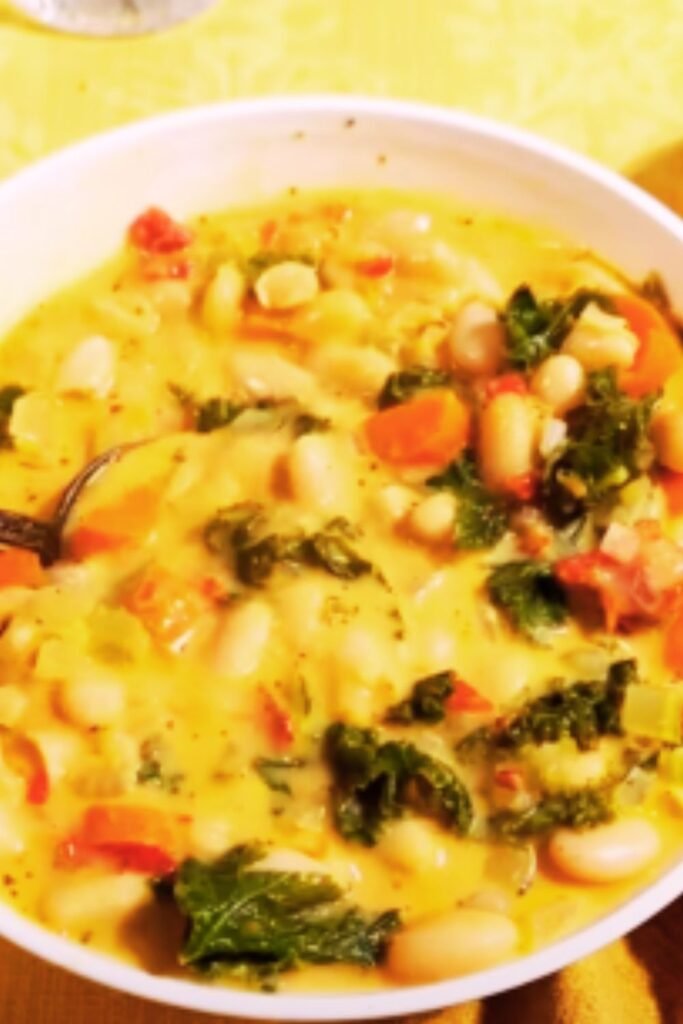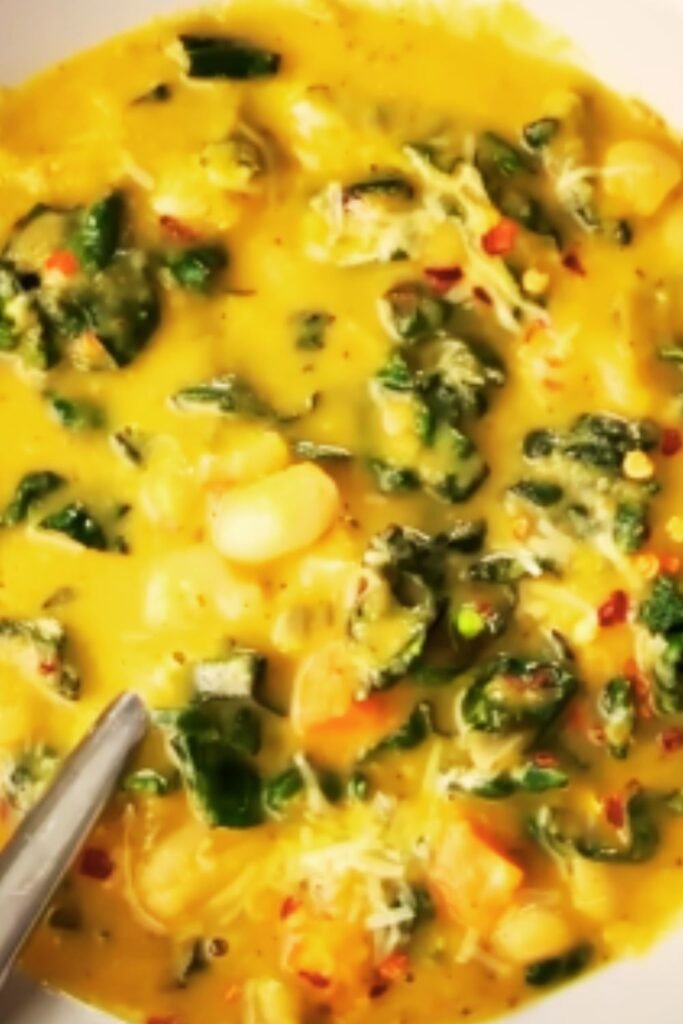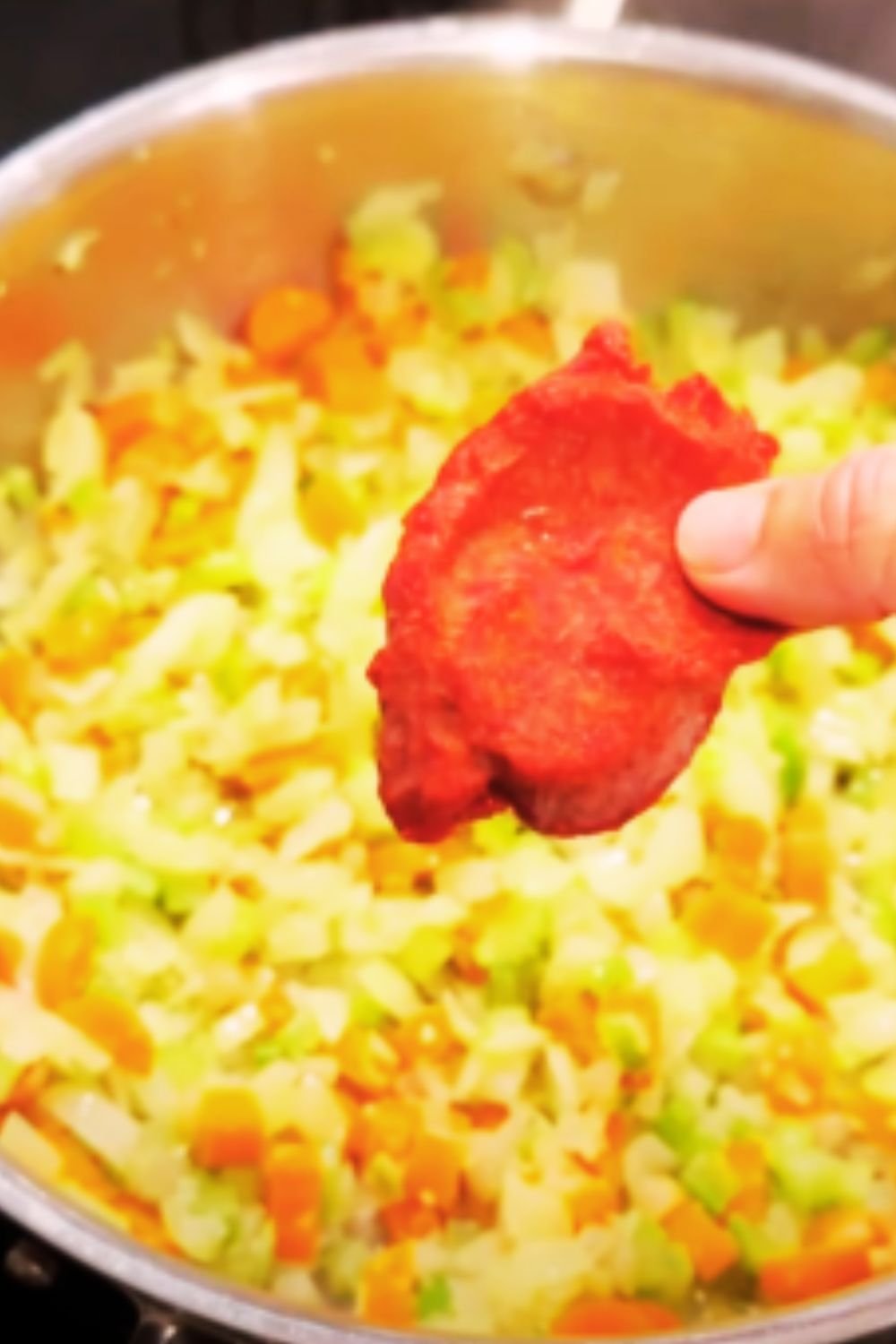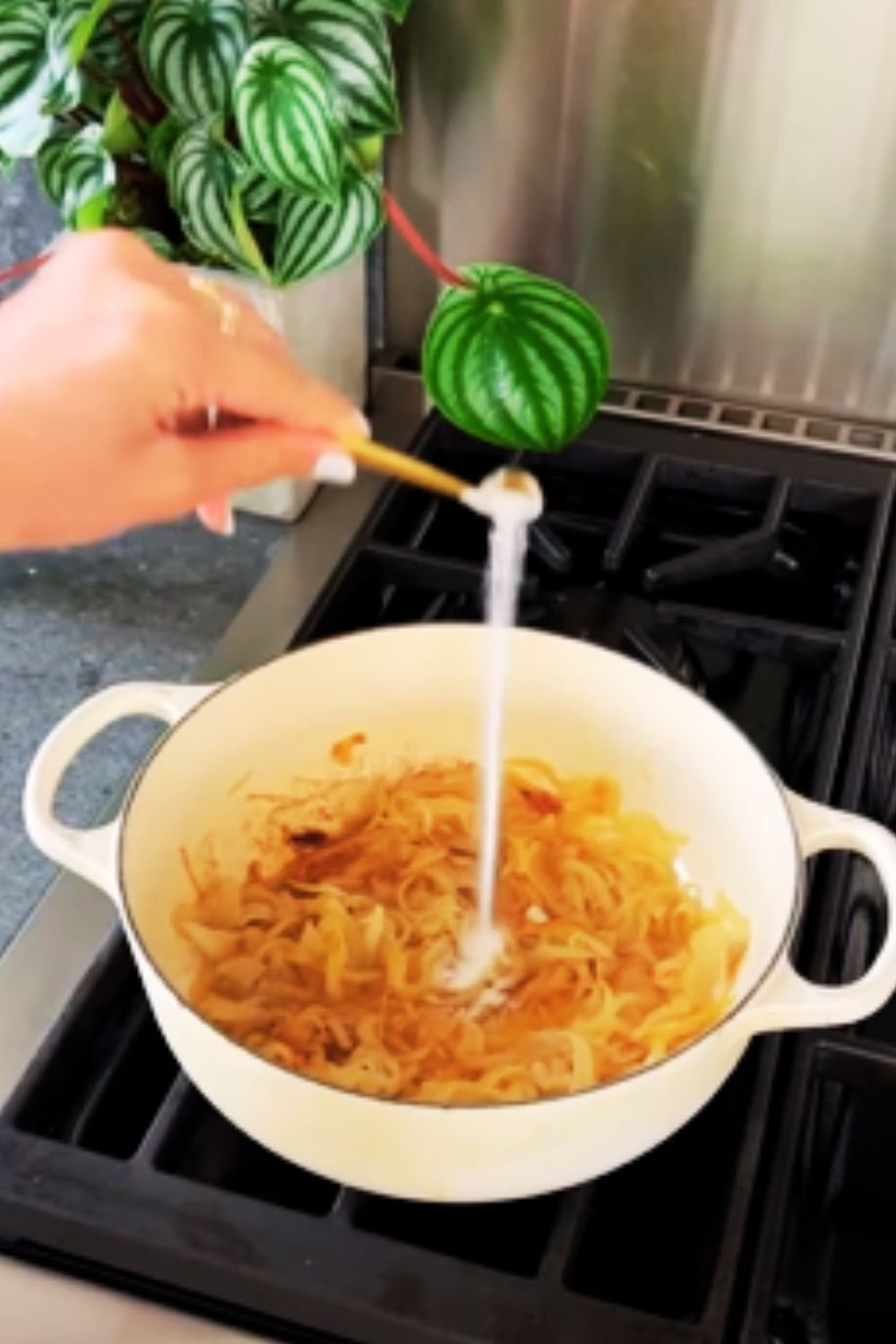There’s something magical about a bowl of ribollita that transports me straight to the rolling hills of Tuscany. This hearty, rustic soup has become my go-to comfort food during chilly months, and after years of perfecting my technique, I’m thrilled to share what I believe is the most authentic ribollita recipe you’ll find outside of Italy.
What is Ribollita?
Ribollita (pronounced ree-bohl-LEE-tah) literally means “reboiled” in Italian. This name hints at the humble origins of this soup, which began as a peasant dish where leftover minestrone and bread were reboiled together to create a hearty meal that could stretch limited resources. Today, it stands as one of Tuscany’s most celebrated culinary treasures.
What makes ribollita special is its distinctive texture—thick enough that a spoon can stand upright in it—and its layered flavors that develop over time. The soup actually tastes better the next day, making it perfect for meal prep and leftovers.
The History Behind This Tuscan Classic
Ribollita’s origins trace back to medieval Tuscany, where servants would collect the leftover bread and meat juices from their masters’ banquet tables. They would take these scraps home and boil them with available vegetables to create a hearty meal for their families.
The dish embodies the Italian philosophy of “cucina povera” (poor kitchen)—transforming humble ingredients into something extraordinary through careful cooking techniques and patience. Traditionally prepared on Fridays, ribollita allowed observant Catholics to enjoy a satisfying meal without meat during days of religious abstinence.
What I love most about ribollita is how it represents the best of Italian cooking: simple ingredients, minimal waste, and maximum flavor. Each family in Tuscany has their own variation, passed down through generations, but the core elements remain the same.
Essential Ingredients for Authentic Ribollita
Before diving into the recipe, let’s explore the critical components that make a truly authentic ribollita:
- Cavolo nero (Tuscan kale): The backbone of traditional ribollita, with its distinctive earthy flavor
- Cannellini beans: Provides creaminess and protein
- Stale Tuscan bread: Unsalted bread is traditional, but any good-quality crusty bread will work
- Seasonal vegetables: Carrots, celery, onions (soffritto), plus whatever is available
- Extra virgin olive oil: The best quality you can afford, as it significantly impacts flavor
Ingredient Spotlight: Cavolo Nero
Cavolo nero, or Tuscan kale, differs from the curly kale commonly found in American supermarkets. Its flat, dark leaves have a more intense, earthy flavor that forms the foundation of ribollita. If you can’t find cavolo nero, lacinato kale (dinosaur kale) makes an excellent substitute, while regular kale works in a pinch but provides a slightly different flavor profile.

The Importance of Good Bread
The bread in ribollita isn’t just a filler—it’s a critical ingredient that gives the soup its distinctive texture and body. Traditional Tuscan bread (pane toscano) is made without salt, which allows it to better absorb the flavors of the soup. Day-old bread works best, as fresh bread can become too mushy.
Authentic Tuscan Ribollita Recipe
Preparation Time
| Task | Time |
|---|---|
| Prep | 30 minutes |
| Soaking beans (if using dried) | 8 hours or overnight |
| Cooking | 1 hour 45 minutes |
| Resting | Ideally overnight |
| Total active time | 2 hours 15 minutes |
| Total time (including soaking and resting) | 24 hours |
| Servings | 8-10 |
Ingredients
| Ingredient | Quantity | Notes |
|---|---|---|
| Dried cannellini beans | 400g (14oz) | Soaked overnight, or 800g (28oz) canned, drained |
| Cavolo nero (Tuscan kale) | 300g (10.5oz) | Stems removed, roughly chopped |
| Savoy cabbage | 150g (5.3oz) | Core removed, roughly chopped |
| Yellow onions | 2 medium | Finely diced |
| Carrots | 2 large | Finely diced |
| Celery stalks | 2 | Finely diced |
| Garlic cloves | 4 | Minced |
| Tomato paste | 2 tablespoons | Concentrated for depth of flavor |
| Canned whole peeled tomatoes | 400g (14oz) | Crushed by hand |
| Potatoes | 2 medium | Peeled and diced into 1cm cubes |
| Fresh rosemary | 1 sprig | Kept whole for easy removal |
| Fresh thyme | 3 sprigs | Tied together with kitchen string |
| Bay leaves | 2 | Dried is fine |
| Parmesan rind | 1 piece | Optional but highly recommended |
| Stale Tuscan bread | 300g (10.5oz) | Torn into rough chunks |
| Extra virgin olive oil | 80ml (⅓ cup) | Plus extra for serving |
| Sea salt | To taste | |
| Freshly ground black pepper | To taste | |
| Fresh parsley | Small handful | Finely chopped, for garnish |
Equipment Needed
- Large heavy-bottomed pot or Dutch oven
- Wooden spoon
- Ladle
- Sharp knife and cutting board
- Kitchen string (for herb bundle)
Instructions
Day One: Prepare the Beans (if using dried)
- Place the dried cannellini beans in a large bowl and cover with cold water, ensuring they’re submerged by at least 5cm (2 inches).
- Let soak overnight or for at least 8 hours.
- Drain and rinse thoroughly before cooking.
Day One: Make the Soup Base
- In a large heavy-bottomed pot or Dutch oven, heat 60ml (¼ cup) of olive oil over medium heat.
- Add the diced onions, carrots, and celery (soffritto). Cook gently for 10-12 minutes until softened but not browned, stirring occasionally.
- Add the minced garlic and cook for another 2 minutes until fragrant.
- Stir in the tomato paste and cook for 1-2 minutes, allowing it to slightly caramelize.
- Add the hand-crushed tomatoes, stir well, and simmer for 5 minutes.
Add Beans and Vegetables
- If using dried beans: Add the soaked and drained beans to the pot along with 2.5 liters (10 cups) of cold water. Bring to a boil, then reduce to a simmer.
- If using canned beans: Add 2 liters (8 cups) of water to the pot and bring to a boil, then reduce to a simmer. Reserve the beans for later.
- Add the rosemary sprig, thyme bundle, bay leaves, and Parmesan rind (if using).
- Simmer gently for 45 minutes if using dried beans, or 20 minutes if using canned beans.
- Add the diced potatoes and simmer for another 15 minutes.
- If using canned beans, add them now.
- Add the chopped cavolo nero and savoy cabbage. Stir well and simmer for another 15-20 minutes until the greens are tender.
- Season with salt and pepper to taste.
- Remove and discard the herb sprigs, bay leaves, and Parmesan rind.
Add the Bread
- Add the torn bread to the soup and stir well to incorporate. The bread should begin to break down and thicken the soup.
- Cook for another 10 minutes, stirring occasionally.
- Remove from heat, drizzle with the remaining olive oil, cover, and let rest overnight in the refrigerator for flavors to develop. This step is what makes it true ribollita (“reboiled”).
Day Two: Serve the Ribollita
- Gently reheat the soup over medium-low heat, stirring occasionally to prevent sticking. Add a little water if it seems too thick.
- Once heated through, ladle into warm bowls.
- Finish each serving with a generous drizzle of high-quality extra virgin olive oil, freshly ground black pepper, and a sprinkle of chopped parsley.

Tips for Perfect Ribollita Every Time
Getting the Texture Right
The defining characteristic of ribollita is its thick, porridge-like consistency. Unlike many soups, ribollita should be eaten with a fork rather than a spoon. The bread should fully break down into the soup, creating a unified texture rather than floating pieces.
If your soup is too thin, you can add more bread. If it’s too thick, add a little vegetable broth or water when reheating. Remember, the soup will continue to thicken as it sits, so it’s better to err on the side of being slightly too thin initially.
Bean Preparation
While canned beans work perfectly well and save time, cooking dried beans from scratch gives you better control over their texture and flavor. If using dried beans, consider cooking them with a few aromatics (onion, carrot, celery, garlic) and herbs for added depth.
Seasonal Variations
Traditional ribollita embraces seasonal vegetables. In summer, you might add zucchini or fresh tomatoes instead of canned. In spring, you could incorporate asparagus or fresh peas. These variations are not just acceptable but encouraged in the spirit of using what’s available—a core principle of Tuscan cooking.
Make-Ahead Magic
Ribollita is one of those rare dishes that improves with time. The flavors meld and deepen after a day or two in the refrigerator. I often make a double batch and enjoy it throughout the week, with the flavor developing more each day.
Serving Suggestions
Ribollita is traditionally served as a main course, but I’ve found it pairs wonderfully with:
- A simple green salad dressed with lemon juice and olive oil
- Thin slices of prosciutto for a non-vegetarian option
- Italian-style pickled vegetables (giardiniera)
- A platter of roasted vegetables for a vegetable-focused feast

Storage and Freezing
Ribollita keeps beautifully in the refrigerator for up to 5 days, with its flavor improving each day. Store in an airtight container and reheat gently on the stovetop, adding a splash of water or broth if it’s thickened too much.
For freezing, I recommend doing so before adding the bread. Freeze the bean and vegetable base for up to 3 months, then thaw, reheat, and add fresh bread when ready to serve. This preserves the best texture.
Nutritional Benefits of Ribollita
Ribollita isn’t just delicious—it’s also incredibly nutritious. Here’s a breakdown of its health benefits:
| Ingredient | Key Nutrients | Health Benefits |
|---|---|---|
| Cannellini beans | Protein, fiber, iron | Sustained energy, digestive health, blood cell production |
| Cavolo nero | Vitamins A, C, K, calcium | Immune support, bone health, anti-inflammatory properties |
| Cabbage | Vitamin C, fiber | Digestive health, immune function |
| Carrots | Beta-carotene, vitamin K | Eye health, immune support |
| Olive oil | Monounsaturated fats, polyphenols | Heart health, anti-inflammatory properties |
| Tomatoes | Lycopene, vitamins A & C | Antioxidant protection, skin health |
| Whole grain bread | Complex carbs, B vitamins | Sustained energy, nervous system support |
With its balanced combination of complex carbohydrates, plant proteins, healthy fats, and abundant vegetables, ribollita represents a perfect example of the heart-healthy Mediterranean diet in a single bowl.
Common Questions About Ribollita
Q: Can I use regular kale instead of cavolo nero? Yes, absolutely. While cavolo nero (Tuscan kale) is traditional and provides the most authentic flavor, regular curly kale works fine. The flavor will be slightly different but still delicious.
Q: My soup is too watery. What did I do wrong? Traditional ribollita should be thick enough for a spoon to stand in it. If yours is too thin, add more bread and let it sit longer. Remember, the soup continues to thicken as it rests.
Q: Can I make this vegan? Yes! Simply omit the Parmesan rind. You might want to add a tablespoon of white miso paste for umami depth, though this is not traditional.
Q: How important is the overnight resting period? While you can serve ribollita the same day it’s made, the overnight rest is what transforms it from a good soup to an exceptional one. The flavors meld, the bread fully incorporates, and the texture becomes perfectly unified.
Q: Can I add meat to make it more substantial? Traditionally, ribollita is vegetarian, but some Tuscan families do add pancetta or prosciutto ends to the soffritto for added flavor. If you want to include meat, sauté 100g of diced pancetta with the vegetables at the beginning.
Q: What’s the best bread to use if I can’t find Tuscan bread? Any good-quality, hearty country bread with a substantial crust works well. Sourdough is an excellent choice, as is a rustic Italian or French loaf. Avoid soft, sandwich-style breads which will disintegrate too quickly.
Q: My soup is too thick the next day. How do I fix it? This is completely normal! Simply add a little vegetable broth or water when reheating until you reach your desired consistency.
The Cultural Significance of Ribollita
In Tuscany, ribollita represents more than just food—it’s a cultural touchstone that speaks to the region’s agricultural heritage and resourceful spirit. From humble beginnings as a way to use leftover bread and vegetables, it has become a celebrated dish that appears on the menus of both countryside trattorias and upscale restaurants throughout Italy.
What makes ribollita special is how it embodies the Tuscan approach to cooking: emphasizing quality ingredients, simplicity, and patience. There’s a saying in Tuscany that “good cooking doesn’t start in the kitchen, but in the market”—highlighting the importance of starting with the best ingredients rather than fancy techniques.
When I make ribollita at home, I’m not just preparing a meal but participating in a centuries-old tradition of transforming humble ingredients into something extraordinary. It’s a reminder that great cooking often comes from necessity and creativity rather than abundance.
Final Thoughts
Ribollita exemplifies what I love most about Italian cooking—its respect for ingredients, its connection to the land, and its ability to transform the simple into the sublime. This rustic soup, born from necessity, has become a beloved classic that continues to nourish and comfort.
The next time you find yourself with stale bread and seasonal vegetables, I hope you’ll remember this recipe and create your own pot of ribollita. Like all great dishes, it will evolve a little each time you make it, eventually becoming your own family tradition.
As they say in Tuscany: “A tavola non si invecchia”—at the table, one does not grow old. So gather your loved ones, serve generous bowls of this hearty soup, and create memories that, like ribollita itself, only get better with time.



